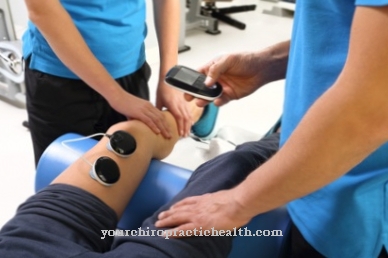The Obstetrics is part of medicine that deals with assisting human childbirth. It is mainly midwives and obstetricians who are involved, as well as gynecologists in medical emergencies.
What is obstetrics?

The work of medical obstetrics begins with the onset of pregnancy and ends with aftercare for the woman after the birth. During pregnancy, obstetrics provides for various check-ups and, for women in risk groups, further supplementary examinations to ensure the health of mother and child. These are mainly performed by a gynecologist.
As soon as a pregnancy becomes known, a midwife can be called in for a supplementary examination of mother and child. The earlier the midwife takes over part of the obstetrics during pregnancy, the better, because she will also accompany the woman during the birth. During the birth itself, obstetricians monitor the course of the birth, labor, cervical activity, and the general condition of the mother and child. Of course, midwives also help the woman giving birth psychologically to cope with the birth, but that is not her main task.
In addition to medical obstetrics, other occupations such as doula have developed specifically for this purpose, which serves as a spiritual support for women. The gynecologist only intervenes in obstetrics in an emergency and is usually present during the contractions so that he can intervene quickly in the event of complications. Birth operations are a matter for the gynecologist. The gynecologist also takes care of the mother's aftercare in the first step, and later the accompanying midwife.
Treatments & therapies
Obstetrics begins with the determination of pregnancy. If a pregnancy is suspected, the gynecologist takes blood and examines the HCG level. This hormone can be used to determine pregnancy. He then takes over regular ultrasound examinations, examines blood and urine samples at different times and offers the woman additional, optional examinations depending on the risk group.
In the first trimester, the woman's supply of vital nutrients is checked as part of obstetrics, and she can still be vaccinated against rubella and other diseases. The urine and swab from the cervix are checked for infections every four weeks. The child's health can be monitored during the ultrasound examinations. Early detection of malformations is part of obstetrics in the first few months of pregnancy. The gynecologist can carry out additional examinations such as the removal of amniotic fluid in order to determine or rule out diseases.
If the decision to have an abortion is made during this time, the woman will leave the obstetrics department and be transferred to surgery. Accompanied by the gynecological examinations, a pregnant woman can call on a midwife, who also examines the mother and child by ultrasound and palpation. She can provide the woman with tips and aids during pregnancy to make everyday life easier. During the birth itself, both the accompaniment of a normal birth and the intervention in a problematic birth belong to the spectrum of obstetrics. While normal births are only accompanied by support, if problems arise, surgical interventions are carried out by the gynecologist present. At best, perineal cuts are sufficient; at worst, an emergency caesarean section occurs.
Diagnosis & examination methods
Basically, obstetrics knows the following diagnostic, examination and treatment procedures:
- Blood test
- Urinalysis
- Smear of the cervix
- Ultrasonic
- histological examinations
- Food supplements during pregnancy (oral, intravenous)
- surgical procedures before and during childbirth
- Treatment of pain during childbirth
- direct postnatal care
Obstetrics before birth regularly examines the health of mother and child. It clarifies whether there are dangerous infections that can easily arise due to the reduced activity of the immune system of a pregnant woman. She treats this according to the possibilities during an existing pregnancy. Obstetrics can partially combat undesirable developments and risks or identify them in good time for treatment, but it can also exclude them or facilitate the decision to terminate the pregnancy due to an undesirable development of the child.
During the pregnancy, obstetrics detects unfavorable positions of the child by means of ultrasound examinations and can prepare the birth accordingly or support the woman in making a necessary decision about the type of birth. With the help of blood tests, the supply of women with important nutrients that are necessary for their own health and the development of their child is determined. If necessary, the gynecologist can prescribe a dietary supplement in tablet form; in cases of severe deficiencies, intravenous administration can also provide rapid relief. Iron infusions are particularly suitable for people with severe iron deficiency, as they work faster.
In the last, physically strenuous third of pregnancy, obstetrics often include supports from the medical supply store, for example for back and abdominal muscles. Furthermore, the child's heartbeat is now regularly monitored using CTG. During the birth, the obstetrics department monitors the normal course with contractions and physical examinations. In many natural births there is a perineal incision in the course of the birth; interventions with the suction cup or forceps are less common. The woman can also receive a PDA to combat pain. In an emergency or at the express request of the woman, a caesarean section is performed. Depending on the type of birth, different aftercare measures are required, ranging from hip baths for perineal incisions to wound care after the caesarean section.









.jpg)



.jpg)



.jpg)







.jpg)


